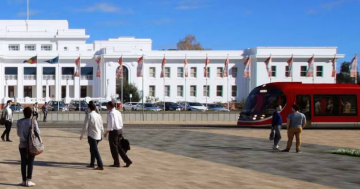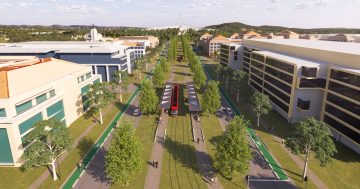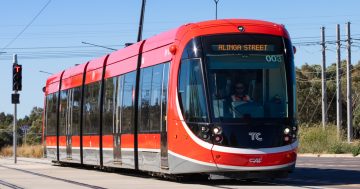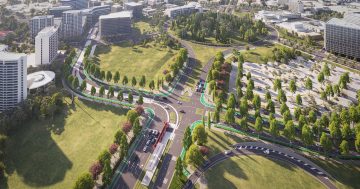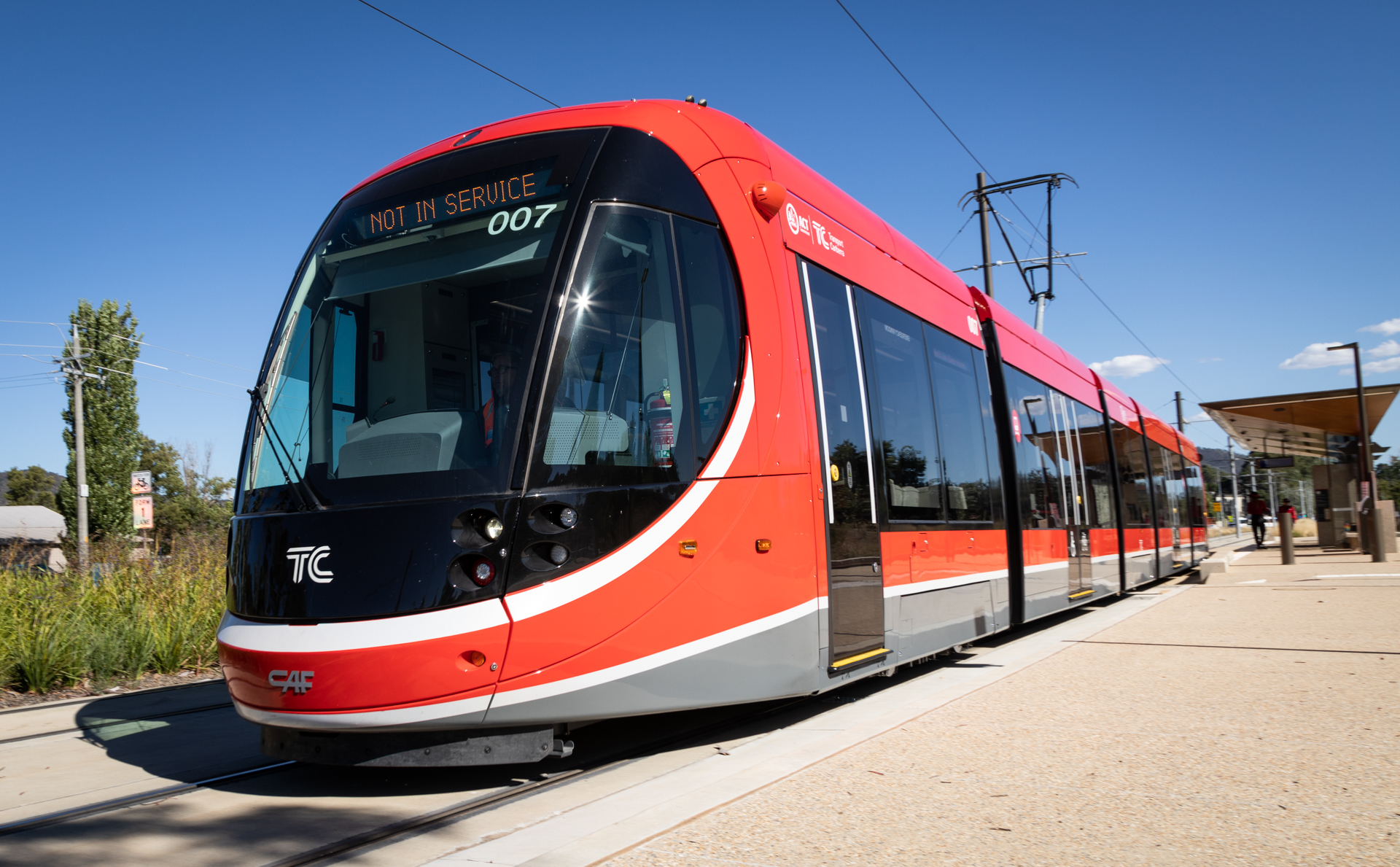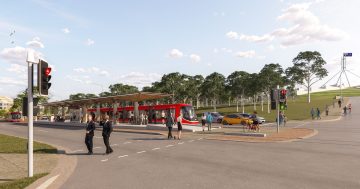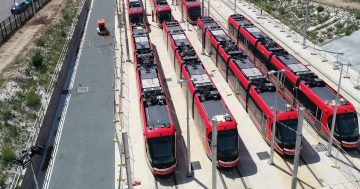
A light rail vehicle. The Government’s preferred route for Stage 2 was well supported in public consultation.
The ACT Government is now facing building a new bridge across Lake Burley Griffin and putting wires underground along the length of Adelaide Avenue as part of Stage 2 of the light rail network, works that could see the cost of the project blow out.
Announcing that the Government had opted for the longer journey through Parkes and Barton as its preferred route for Stage 2 from Civic to Woden, Minister for Transport Meegan Fitzharris insisted that the cost of the project was still comparable with the official $707 million price tag for Stage 1, although some say the bill will be more like $1 billion.
But she admitted that building a new bridge in the middle of the Commonwealth Avenue Bridge and avoiding any overhead wires near the Lodge and Government House as now desired by the National Capital Authority would likely add to the cost.
“The costs are comparable in terms of the length and distance except for those bits we know are going to be more difficult and that is the bridge and wire-free running,” she said.
But now the Government faces a change of plans with those two most expensive aspects of the project.
Ms Fitzharris said there were two options to cross the lake – use the existing road or build a new bridge. She said the NCA had originally proposed that Commonwealth Avenue be reduced to two lanes of traffic but it had now ‘asked us to consider light rail on a new bridge in the middle of Commonwealth Avenue bridge and that’s the work that we are doing now’.
The Minister said that the Government had always known of the NCA’s requirement for putting wires underground through areas of the Parliamentary zone but had believed wire-free running would stop at the back of Parliament House.
On whether the Federal Government would pick up some of the tab, Ms Fitzharris said the Government was also talking to the Commonwealth about ‘infrastructure investment’ as well as the planning processes.
She could not provide any cost estimate and said the business case would be some months away.
Late last year the Government whittled down the route options to a more direct, shorter route via Parliament House and the other going through the Parliamentary Triangle to take in employment hubs and the national institutions.
About three-quarters of respondents from last year’s public consultation backed a route that travels through Barton.
But many remain concerned about the longer route and travel times and what impact light rail will have on buses, particularly along the Blue Rapid route.
Ms Fitzharris said the city’s public transport system had to be seen as an integrated network and reassured commuters that there would be more rapid bus routes, all integrated into the light rail network to provide a better result overall.
“There is currently not a rapid bus service between Woden, Barton and the City. We’re not talking apples and apples here, we’re talking quite different routes. We’re talking about light rail really picking up a considerable employment hub that people in Woden currently don’t have the option of getting to on rapid transport, and also currently for example when people are hopping on Stage 1, whether that’s at Harrison or at Dickson or in the City, they can also get through heading south into the Parliamentary zone, so it’s really important to factor the Stage 2 route as part of an integrated public transport network for Canberra.”
“We are going to have when light rail starts operating, light rail plus eight Rapid bus services right across the city,” she said.
The Parkes and Barton route will require approval from the Federal Parliament and the NCA, and Ms Fitzharris said the ACT Government was currently working through the Commonwealth’s approval processes for the project to provide more detail.
“Light rail stage two has been going through a rigorous planning process that involves negotiation with the National Capital Authority (NCA) and Federal Parliament due to the heritage and national importance of the Parliamentary Triangle. It is important that Government works closely with the National Capital Authority to ensure the project compliments the wider Parliamentary Triangle,” she said.

But the possibility of Stage 2 becoming the subject of a Federal inquiry as flagged by ACT Liberal Senator Zed Seselja may also delay the process.
The Minister accused the Senator of trying to sabotage the project by proxy, saying she continued to be worried about what the Canberra Liberals would do to continue to undermine light rail.
“I am very concerned about the Canberra Liberals’ comments federally through Senator Seselja, expanding the scope of the Commonwealth Government and the Federal Parliament reach into a project that is funded by the ACT Government and supported by the ACT community,” she said.
“We absolutely need to work with the Fed Parliament on the necessary works approval … but is not the remit of Senator Seselja by proxy through the Federal Government to be trying again to sabotage light rail for Canberra.”
The Minister said it was not appropriate for the ACT Government to finalise the business case for the project until the Commonwealth’s requirements were further worked through.
“With a majority of people in the ACT supporting stage two from Civic to Woden, I’m confident that this is what our community wants to see. This route provides the best access through the Parliamentary zone to employment hubs, cultural institutions and other places of interest such as Manuka Oval.”
She said the City to Woden stage would be the most difficult section of a city-wide network to design and build because of the heritage and national significance of the area in which a significant part of it will be built.
Since the 2016 election, the ACT Government had allocated budget funding, sought community feedback, undertaken stakeholder engagement and progressed expert technical analysis on the two route options between Civic and the Woden Town Centre.
“I look forward to providing a further update in coming months. In the meantime, the ACT Government will continue to progress technical and work on the project,” she said.












